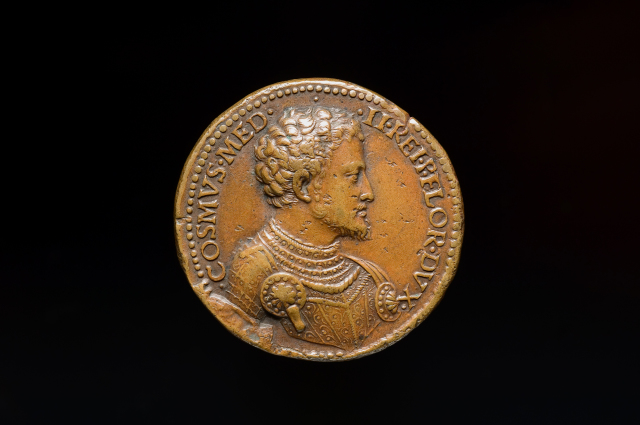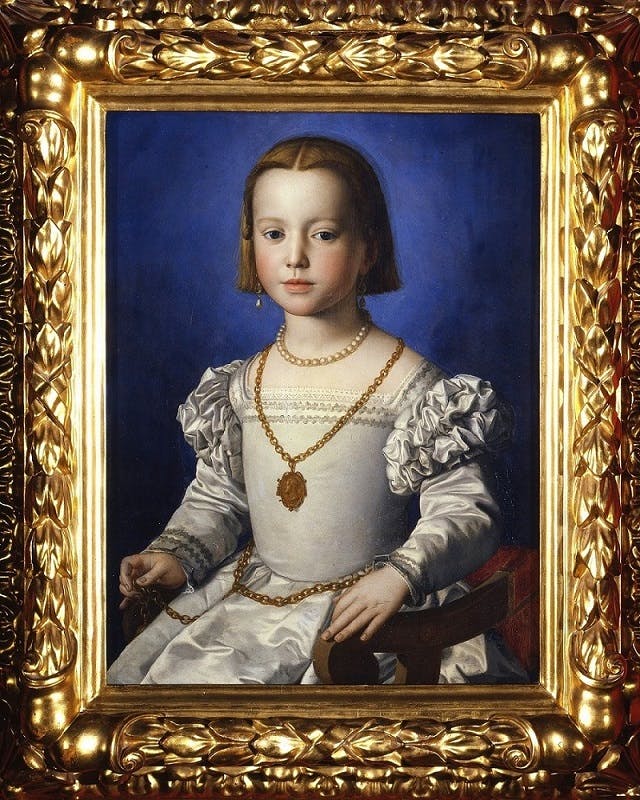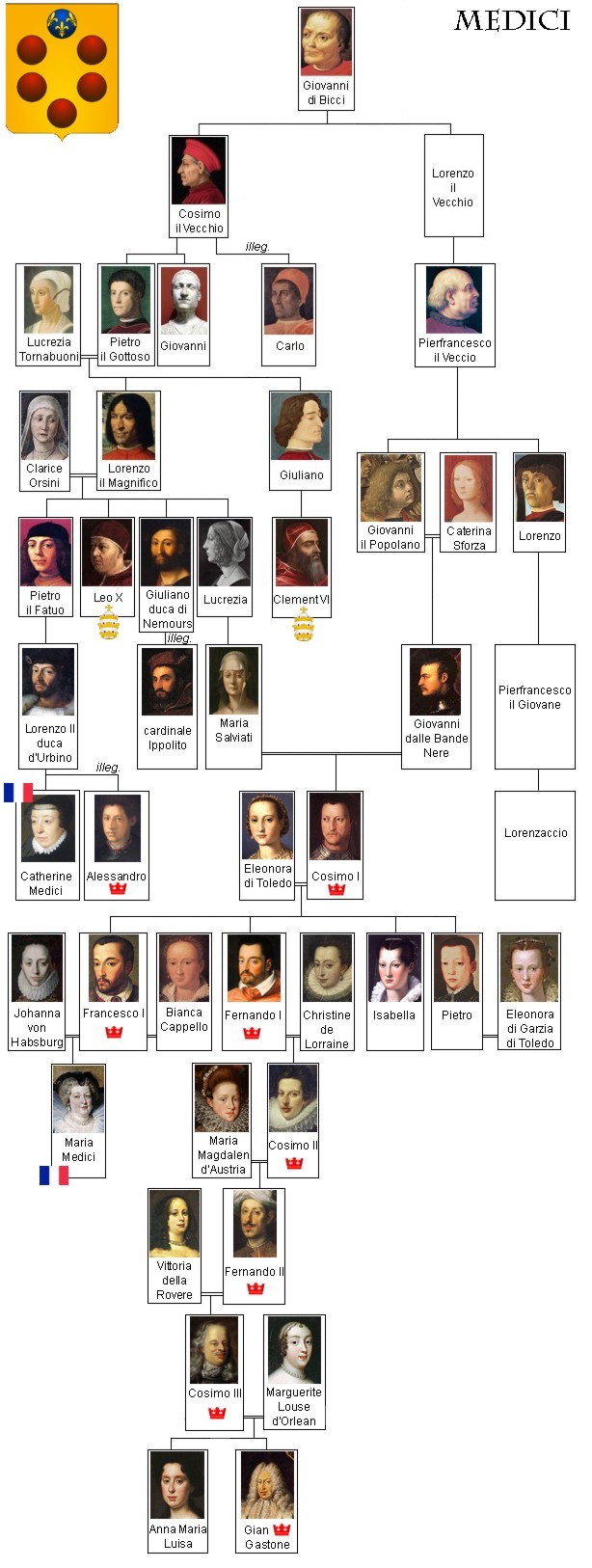After Cosimo the Elder’s death in 1464, his economic and political power over Florence was passed down to his descendants until 1532, when Alessandro de’ Medici was officially declared the Duke of Florence by Pope Clement VII. However, his rule did not last long, ending in 1537 when he was assassinated by his cousin Lorenzino de' Medici, who fled Florence afterward. Without a legitimate direct heir, Cosimo I de Medici was elected to be the second Duke of Florence despite being from a more distant branch of the family. The men who elected him thought he would be easy to manipulate, as he was only 18 years old at the time and had lived most of his life outside of Florence, but they were quickly proven wrong. Cosimo I furthered the Medici’s legitimacy of Florentine rule by gaining the approval of Holy Roman Emperor Charles V, and he laid a siege on the city of Sienna in the 1550s that led him to be named the first Grand Duke of Tuscany by Pope Pius V.
This medal was made in 1537, the year that Cosimo I became Duke of Florence and attained power. These portrait medals became popular during the Renaissance as people began to revive classical Roman customs (including portrait medals). Like ancient Roman coins, portrait medals were a quick and official way to promote important political figures. However, unlike ancient Roman coins, they had no monetary value. At their core, medals were just tchotchkes. They were often given as gifts to friends or potential business partners, and then slowly spread around the city. Cosimo I was the first Medici to take advantage of portrait medallions in this way, and later passed the practice on to his children, along with the rest of his massive, mercantile fortune.
Teacher-Made Medici Medal Lesson Plan- High School Latin by Rosina Catalan
Medici Medal Activity Guide



